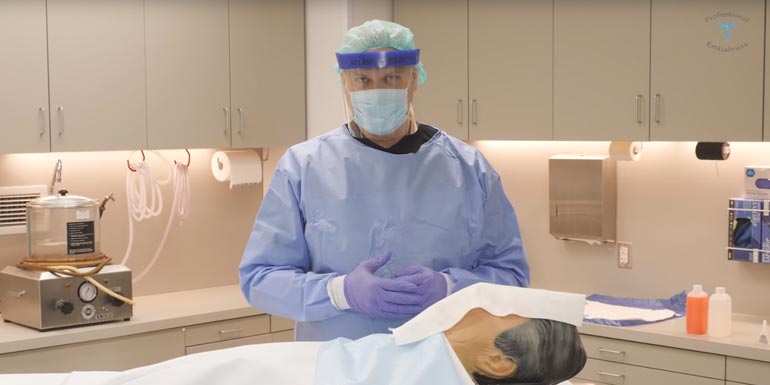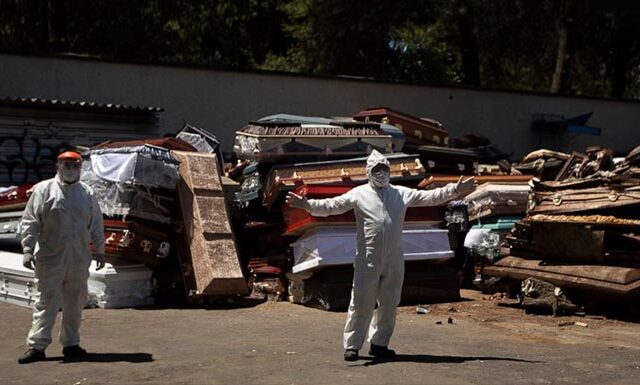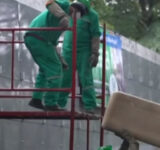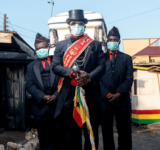As regulations concerning the coronavirus for funerals are getting stricter Matt Smith from Professional Embalmers posted a video to help inform embalmers on how to safely embalm a deceased who died due to the coronavirus.
Coronavirus embalming “How to” video transcription.
This video contains helpful tips to better protect ourselves. This is not a complete guide. Always check with your respective regulators for complete guidance. All appropriate Personal Protective Equipment should be worn at all times.
Everyone’s talking about coronavirus. This is a big deal. Our families are relying on us for guidance and reassurance. We need to protect, not only ourselves, but the public that we serve and I am here to show you how.
Whether you are on your first call or you’re the embalmer taking care of the body in the facility. It’s important that every case is treated as if it’s infectious. To prepare embalmers and staff they need to be sure they are equipped with proper products.
If you are on a removal and you make the transfer from the facility to the funeral home, have some web roll cotton or some sort of cloth and be able to saturate that with a disinfectant before transferring remains. Cover the face completely.
Protect yourself from many droplet transmissions from the deceased to you. Also, it’s important to make sure you’re fully covered yourself. Cover your face, your eyes, your nose. And you can do that easily by using the mask and the proper personal protective equipment (PPE).
If using a flap pleated mask, locate the metal strip and bend it over the bridge of your nose, guide the elastic strips around your ears and then adjust the mask around over your mouth and down over the chin.
Apply the shield mask to your face to protect your eyes from any droplet transmission. To remove the shield mask, discard into a closed container. Once you have the mask on avoid touching the mask with your hands. In doing so you have now contaminated your hands. When removing the mask, remove the elastic loops and dispose into a closed container. For practical purposes I’ll keep my mask off so you ‘ll be better able to hear me.
We are going to discuss how to disinfect the face, the eyes, the nose and the mouth to better protect the embalmer. With a proper disinfectant, forceps and I recommend a syringe, We want to be careful not to use a spray bottle when disinfecting. That’s because a spray bottle produces forces and a stream that could splash back. So we want to make sure that we protect ourselves and those around us if there’s other embalmers in the preparation room.
What I recommend is drop some disinfectant into a syringe and you can place that syringe right into the nostril and empty it into each nostril. Also the eyes and into the mouth. Let that sit for a proper amount of time of 15 or maybe 10 minutes. And then with some web roll cotton and your forceps apply some disinfectant and clean out each eye thoroughly. DIscard and throw into a closed container.
For the naustrals I would do the same. I would make sure plenty of disinfectant is on the web roll, clean out the nose and then continue with packing the nose straight down into the pharynx. To avoid it coming out I would just pack it straight down, do each site.
Next repeat that process with the mouth. Make sure you thoroughly clean the mouth with webroll and your forceps. Make sure that there is plenty of disinfectant on the cotton when you do so. Open the mouth and thoroughly disinfect the inside of the mouth. Dispose of any of the cotton immediately into a closed container.
Now we are ready to close the mouth and begin the preparation. It’s very important that we bathe the body before we do anything, with soap. I recommend using disinfectant soap. Soap does a much more thorough job at disinfecting the body than a disinfectant or alcohol. It’s basically the lipids that break down into the virus and it breaks it apart, and makes it all fall apart. So soap is a very effective way to protect yourself. Bathe the entire body down with soap.
Once we inject the body arterially, we do still have to remember one of the phases of embalming, that aspiration. Aspiration well, that involves piercing the lungs with a trocar and that’s exactly where the virus lives. It begins there and it ends there. And that’s the area in the body that we wanna protect ourselves against.
Most of us have a hydro aspirator or some sort of forced aspiration and when we use the trocar, we attach it to the hose and we insert it into the body, we’re going to enter into the lungs and we want to be very careful.
So before aspiration, before we even introduce the trocar to the body, I recommend taking a bottle of disinfectant and inserting it using the trocar anti gravity tube. I’m going to demonstrate that for you.
A gravity injector can easily be attached to a bottle and then the hose can then be attached to the trocar. Inject the trocar or insert the trocar into the abdomen and into the lungs and I recommend doing this before aspiration. We want to disinfect as much as we can inside the lungs where the virus lives. Do each lung. Let it sit for about 15 minutes before aspiration. Once you’re prepared to aspirate the body, make certain that the aspirator is a closed system.
A closed system aspirator will reduce the chances of any particulate given to the air. As you know, when you aspirate the body, it’s a high force of pressure of water and that force and pressure of water that’s drawing the bacteria and the viruses out of the body, well that goes right into the aspirator hose in the water and that could splash. So protect that area of the aspirator.
If you have a hydro aspirator make sure you have a tube that goes down into the water of the toilet or slap sink or direct this into the sewer. Don’t allow any particulate to come out.
It’s important that we cover that aspirator, if you have a direct fan aspirator that goes directly onto the counter tab, with some sort of protectant like, web roll cotton, soaked with disinfectant spray. While you’re aspirating only have one person in the prep room. It’s important to also inject disinfectant into the throat area as well.
Once you’re done aspirating make sure you thoroughly disinfect your instruments and you should disinfect all of your instruments with a glutaraldehyde based product. Some very strong disinfectants to protect yourself from any future transferens of bacteria or viruses.
It’s important to know and to remind yourselves each time we move the body, that particulates could come out of the mouth or the nose. When we move the body the diaphragm will move and adjust, forcing pressure on the lungs and the expulsion of particulates . So we need to be mindful every single time we move the body. Place a cover over the mouth and nose and then move the body. It’s very important also to have one person in the prep room unless two people are absolutely necessary. To roll the body, clean underneath the body, always have protection over the face.
Now, I’m going to discuss how to pack the nose and seal off the pharynx and the throat from any further transmission of particulate. I’m going to use an incision powder, aron alpha glue and web roll cotton to do that.
Using incision powder, create a bead of powder, in the cotton and then roll the cotton, like so. Hold the cotton, use your forceps and then guide the cotton into the nose all the way down to the pharynx. You’ll be surprised how much cotton you can fit into the nose. Pack each side, each nostril, thoroughly and completely. Do the same thing to the throat. After you have done that use aron alpha, instant adhesive, crazy glue, super glue, something like that. Lift the tip of the nose and inject or squeeze some aron alpha glue into the nose. What that will do is, it will interact with the incision powder and will create a cement. It will also interact with the cotton sealing of the pharynx and the nose and disallowing any particulate to come out of the nose. Do the same thing with the throat if you can do so.
With everything that’s going on today with the viruses, be certain to glue the eyes and glue the lips. Once that’s dried it will create a barrier Not only to protect you as the embalmer, your staff, but also the community that we serve.
Now we’ve covered many of the additional tips that are recommended to use for the embalmer, we are going to answer some of the questions that we received on social media.
The question is: How is this similar to the flu and is there evidence that it’s not a big deal?
Answer: Well, it is a big deal and we treat every case as if it’s infected with the virus, to protect us and the public we serve.
The question is: How do we protect the community and how do we handle visitation and the amount of people that come in?
Answer: Each day is governed a little bit differently, we have to follow the regulations that they put forth and if you don’t then I would suggest that perhaps you are at risk. Follow the instructions of the government.
The question is: My staff is fearful coming in, because they are afraid of becoming infected.
The answer is: Follow the protocol. We know what the protocol is and if we follow that protocol to the letter we will be protected. It is known and it’s been told and the information that we’ve been given, you were the masks you were the gloves and do the things that are set in place. Follow the protocol and you’ll be just fine.
This video contains helpful tips to better protect ourselves. This is not a complete guide. Always check with your respective regulators for complete guidance. All appropriate Personal Protective Equipment should be worn at all times.








